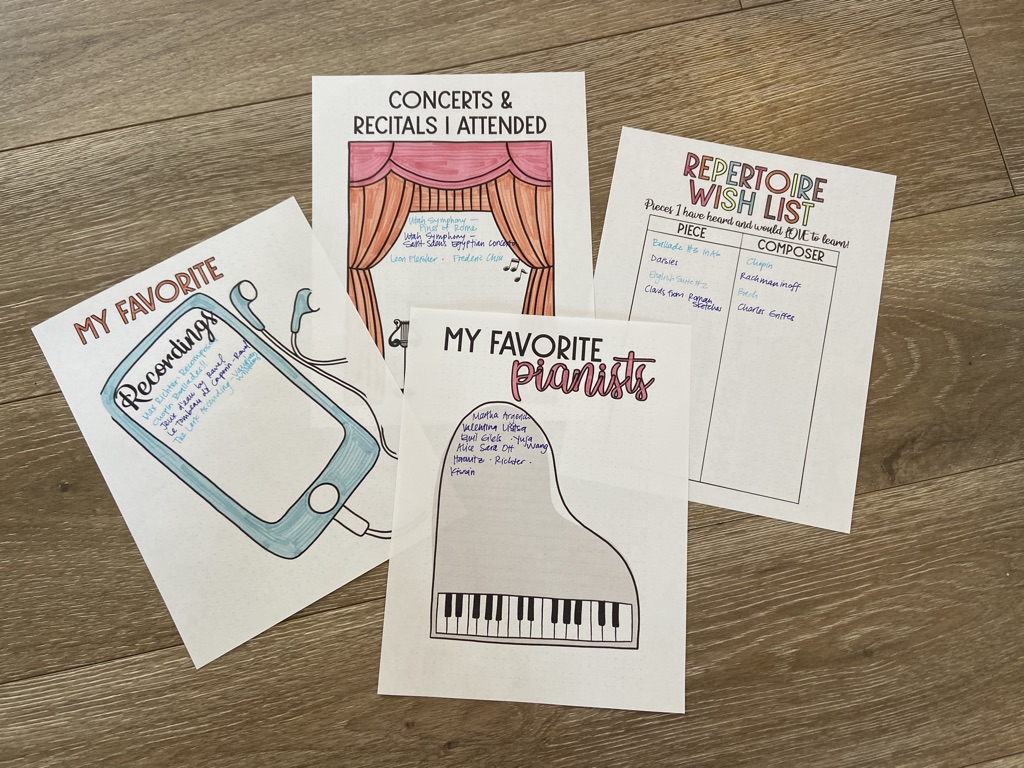Tonight my sister and I were talking about teaching piano (she is also a piano teacher!). One thing we talked about was the challenges of transfer students. At times it can be challenging and slightly frustrating when you need to completely re-teach basic concepts, such as note names or rhythms.
This conversation got me thinking about my own teaching, particularly of young beginners. Do I teach them the things they need to know to become good musicians? Do I give them a good foundation that will help them succeed with other teachers they may study with?
Teachers of young beginners really do have a great responsibility. It is at the beginning that the student starts to form habits – good or bad – in their technique, their practicing, and their performance. A child’s first experience with piano lessons will probably remain with them for a long time. If they have a bad experience, they may not progress much, and probably will quit early on; if they have a good experience it will make all the difference in their success and their later piano study. If they learn how to practice early on, they will learn so much more and progress much more quickly. If their love for music is nurtured through a positive and engaging experience, they will likely be music-makers and music-lovers for life!
So how do we give our beginning students a good foundation? What are the things that are important? (I hope you take a second and take our poll this week, for it deals with this exact question!) I believe there are many factors, all important to some degree.
I believe that two very important ways that we can give our students a good foundation of piano study are:
- fostering an appreciation and a love of music, and by
- making lessons a positive, fun experience that will give the student a good attitude toward piano study.
(I also believe that teaching them good technique and theory and practicing skills are of the utmost importance….we will talk about that later!)
Do we make lessons a fun and positive experience for our students? Do we plan fun and creative ways to teach and reinforce musical concepts? Do we introduce them to the joy that is found in music? I think these are great questions to ask ourselves periodically as we evaluate our teaching.
I think that Bonnie Jack said it so well in her post about teaching a first lesson. She talked about the importance of getting your students excited about piano lessons. She said,
“Do something fun! Young children especially have eagerly looked forward to this day, filled with the wonder of music that is so evident to their little minds. Be careful to nurture that wonder, rather than squashing it with lengthy explanations and assignments. Get off the bench. Move to the music. Do not for a moment let this newly opened mind begin to believe that music is boring and unmoving.”
I love discussing teaching and sharing ideas with other music teachers, and have really been inspired lately by so many of your blogs, particularly by ideas of how to teach concepts in fun and engaging ways. I am excited to use many of these ideas in my own teaching, and really want to strive to make my teaching more fun and engaging, particularly for young beginners.
Amy Greer, a pianist and piano teacher who blogs at
tenthousandstars.net, shared a wonderful quote by Kodaly that I love:
“If at the most susceptible age, from the age of 6 to 16, the child isn’t at least once moved by the life-giving power of great music, later he will hardly be influenced by it. Many times one single experience opens the young soul to music for his whole life. This experience shouldn’t be left to chance: to obtain it is the duty of the schools.” -Kodaly (1929)
I think of my two-year-old son who is so into music right now. He sings as he plays with his toys throughout the day; he dances around whenever there is music playing; he climbs up on the piano bench and loves to play the piano. I think of the joy that music already brings to his life, and how much that joy and appreciation will grow if my husband and I continue to nurture that love of music in him. I believe it is the same with our piano students – if we nurture that love of music (that I really think is inherent in young children) by making piano lessons fun and engaging and by bringing great music into their lives, we really can lay a strong musical foundation that will bless their lives for a long time.


















 ~Elizabeth
~Elizabeth























